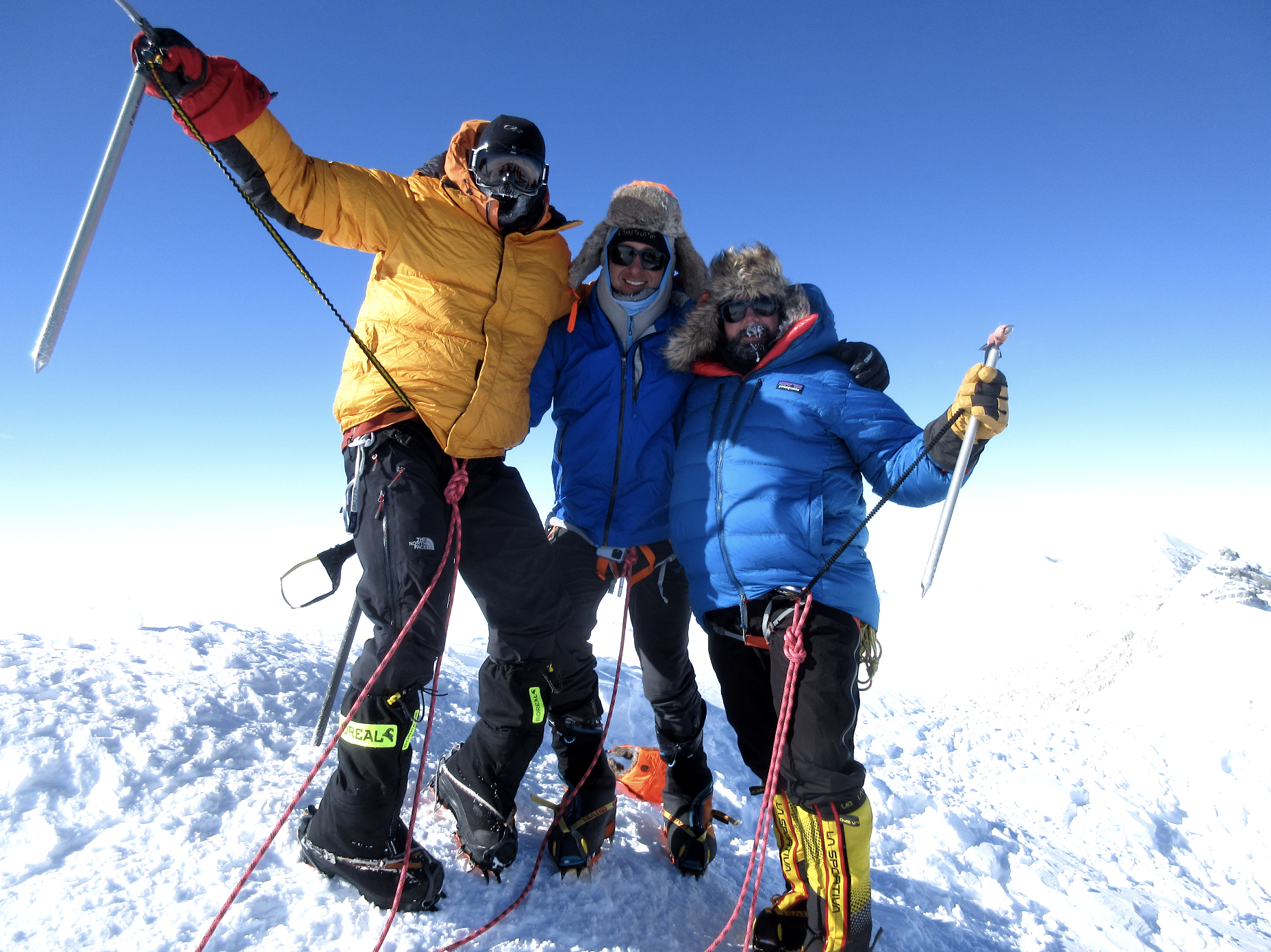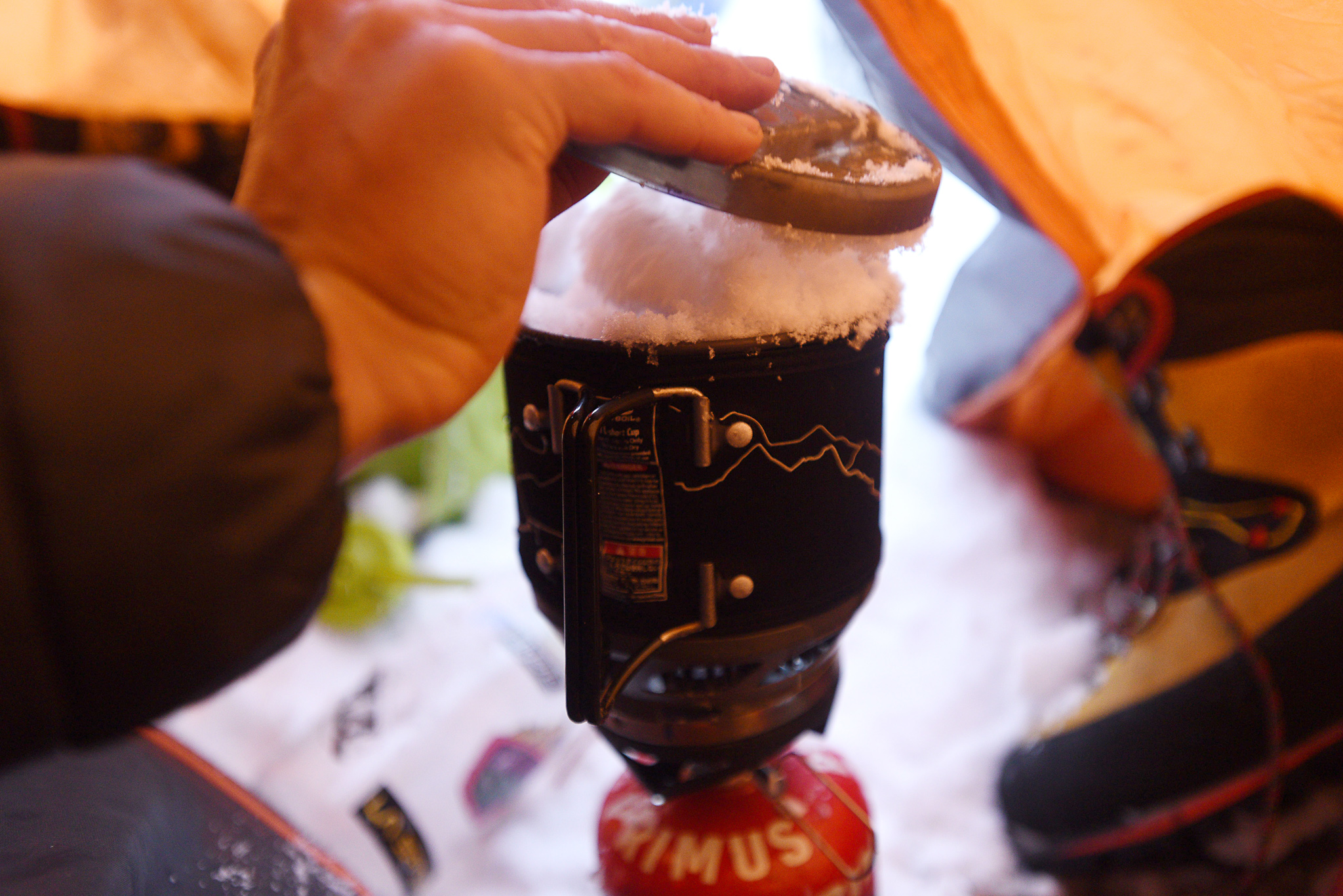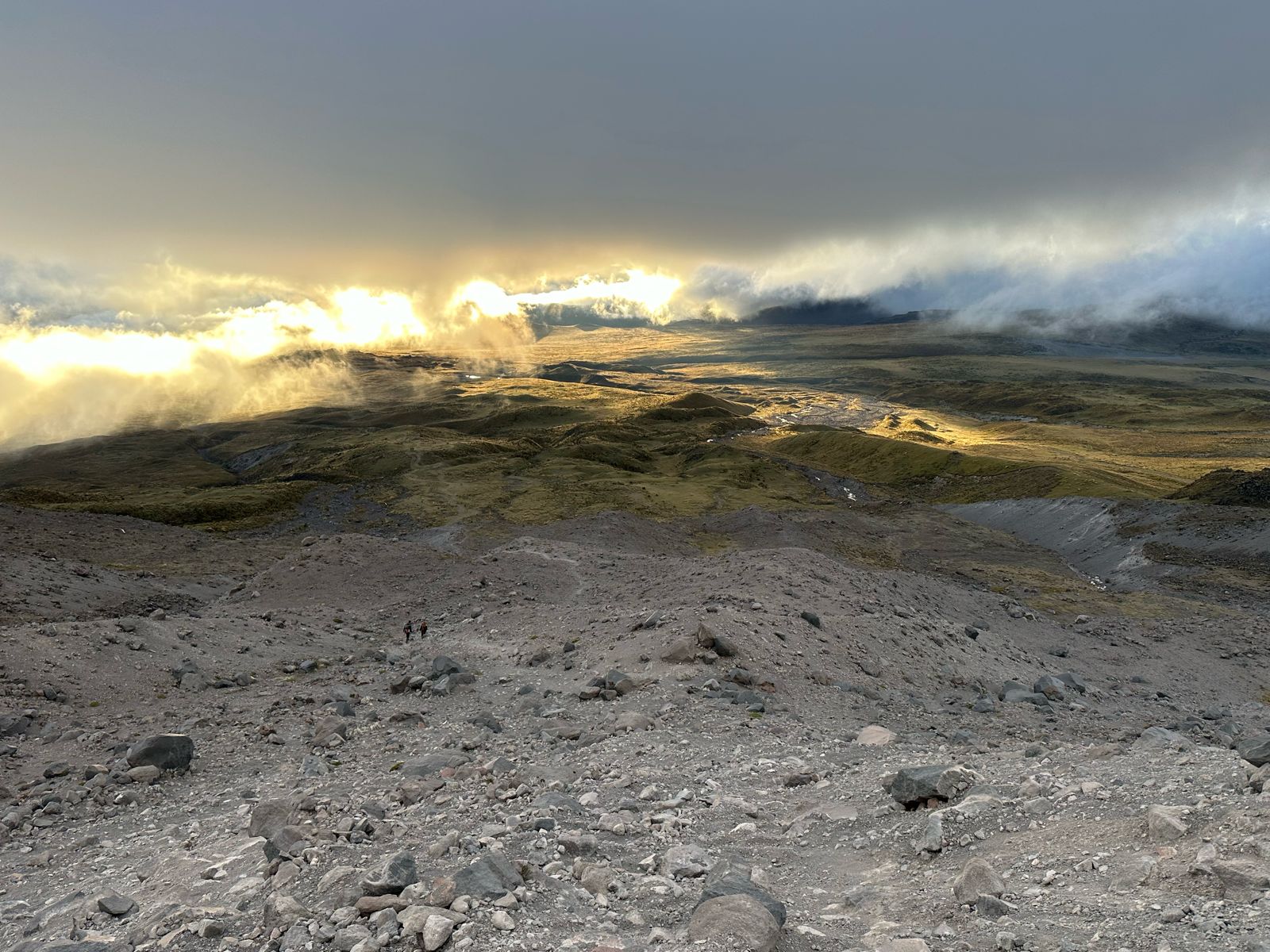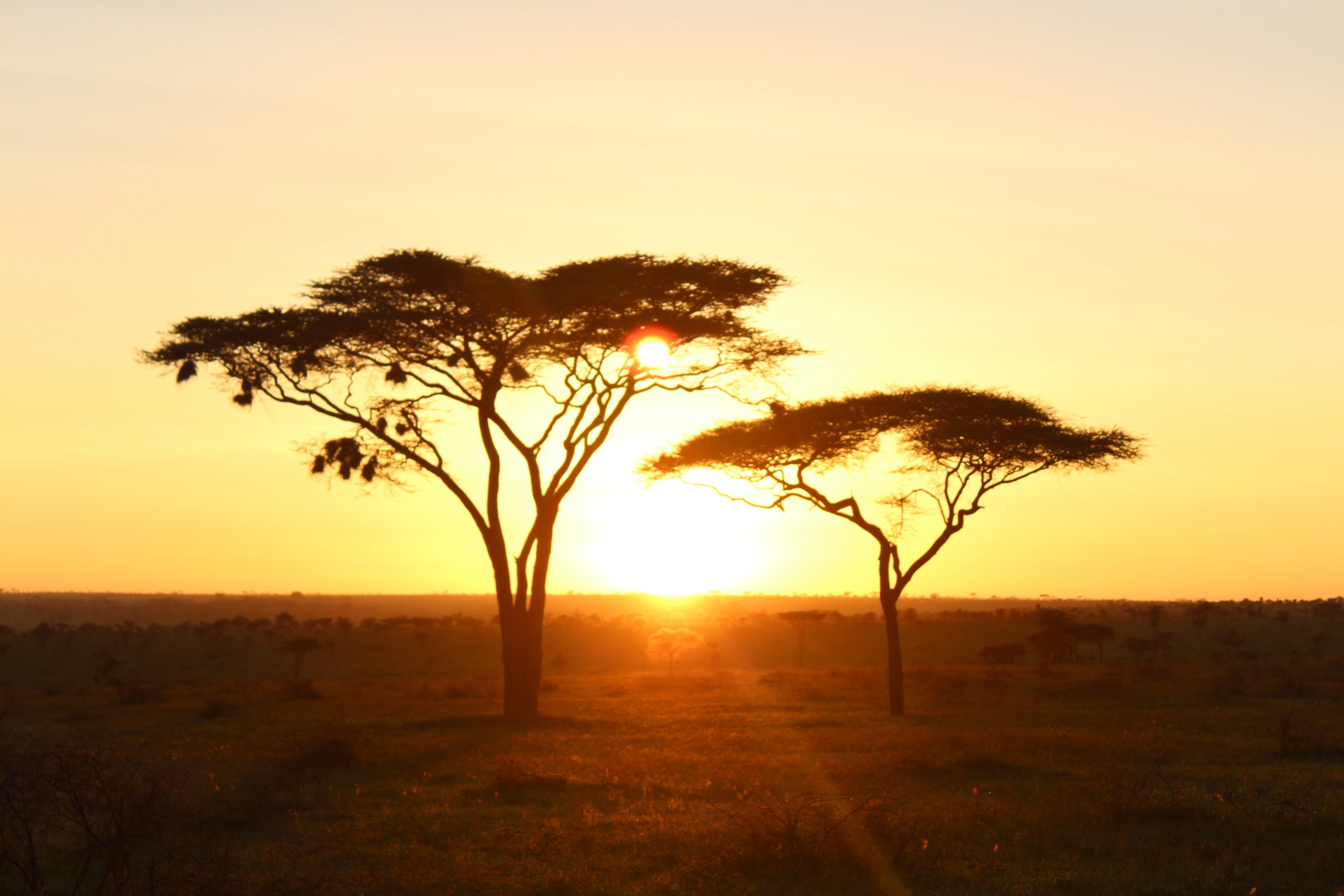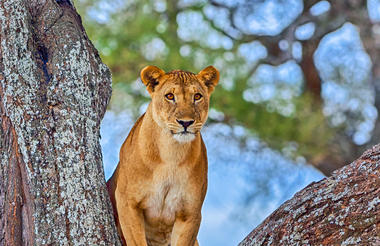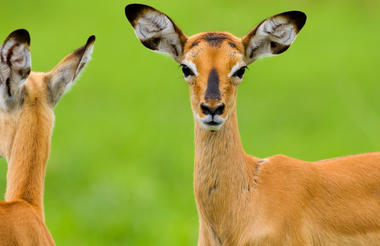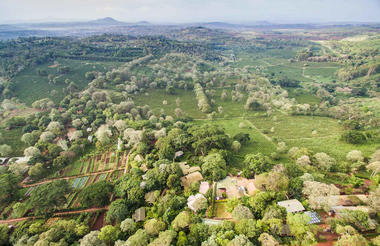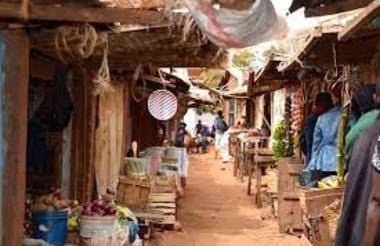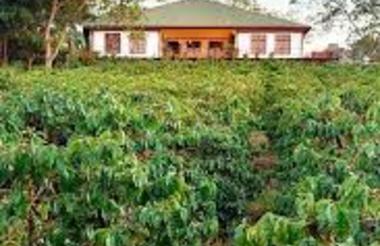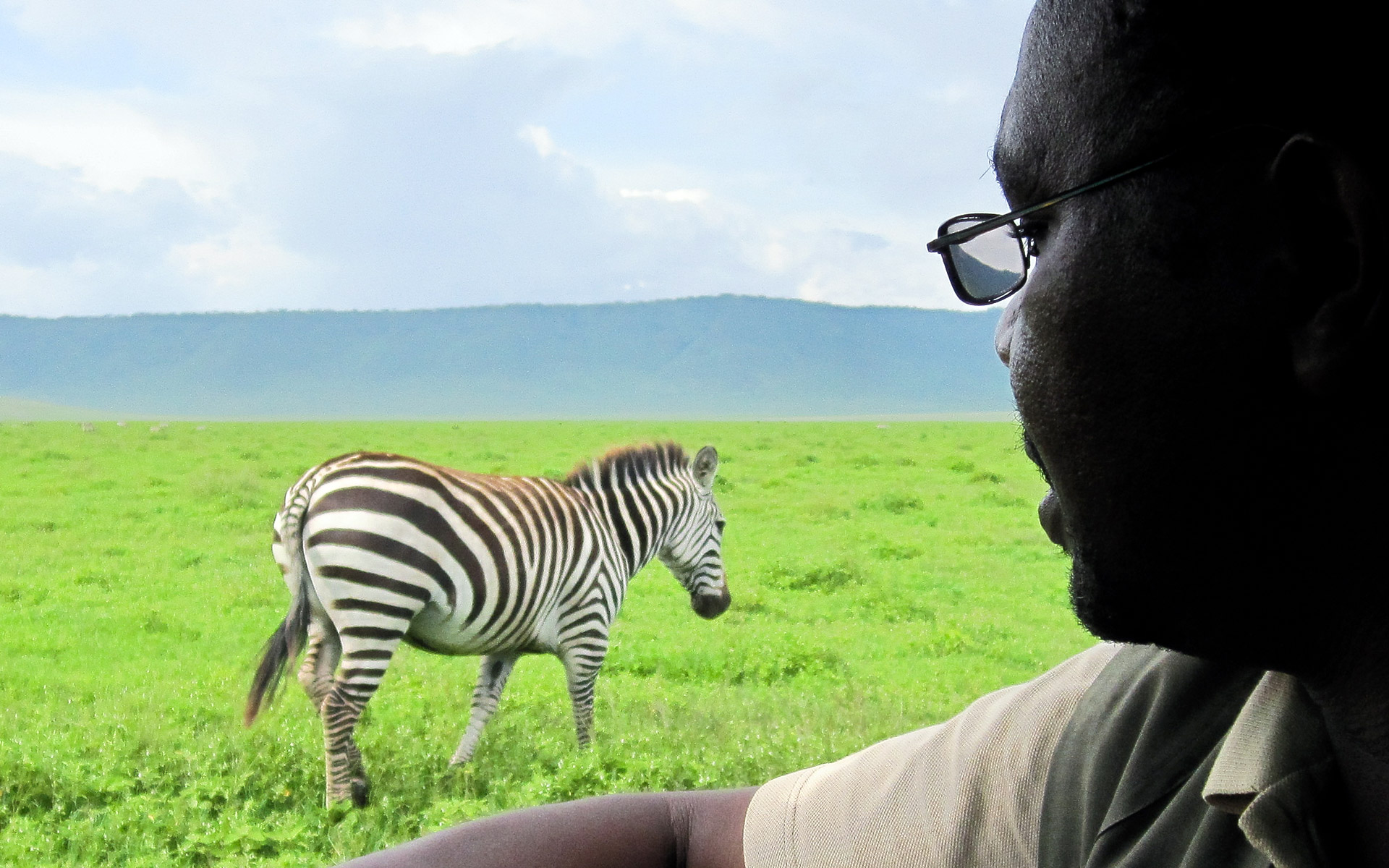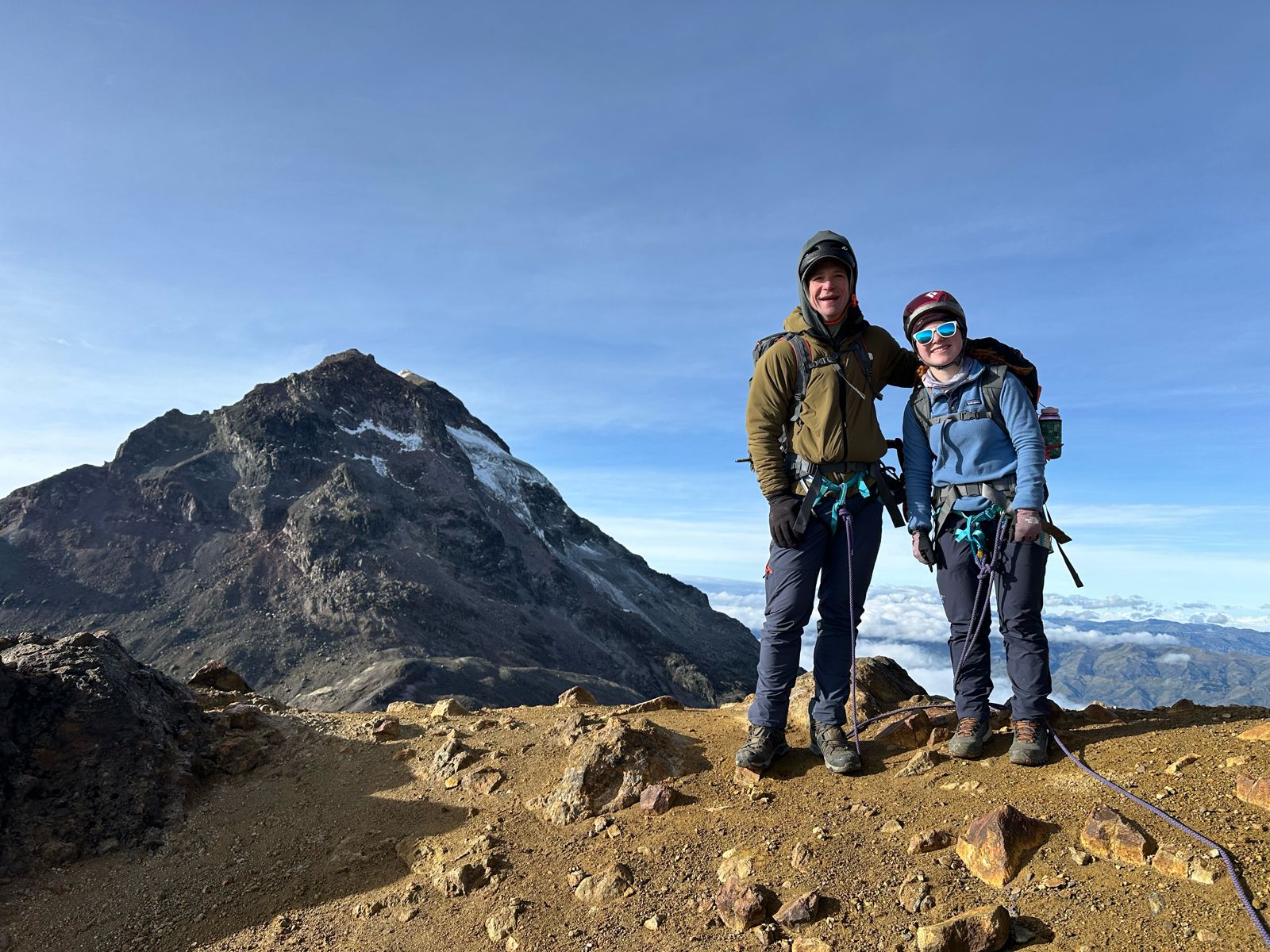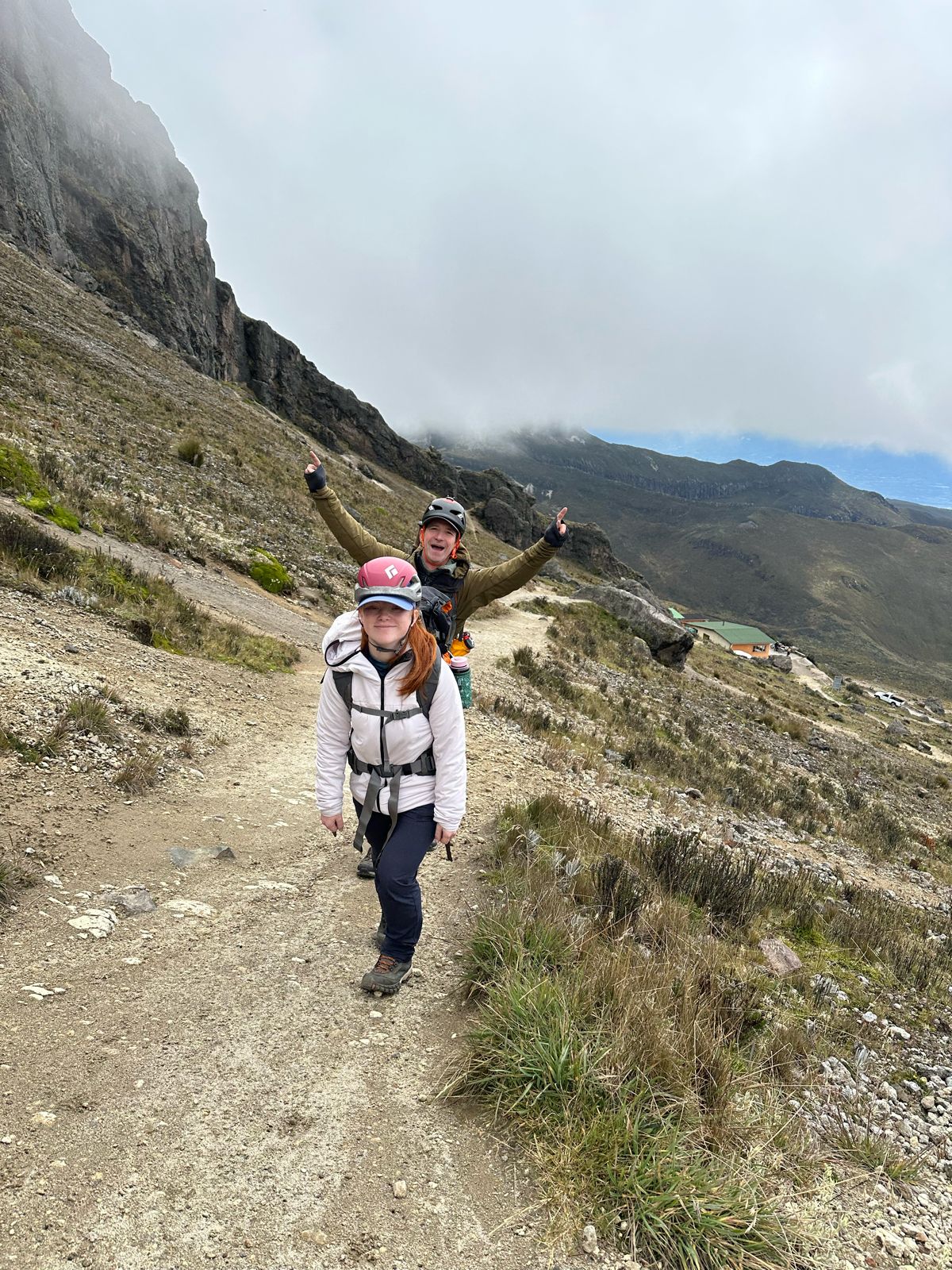Vinson + Aconcagua Combo Climb
Vinson (Antarctica) + Aconcagua Combo Climb
$60,490 USD
2026 & 2027 Vinson-Aconcagua Team Climb Dates:
- Vinson: November 23 – December 7, 2026 / Aconcagua: December 21, 2026 – January 9, 2027
- Vinson: December 4 – 18, 2026 / Aconcagua: December 21 – January 9, 2027
- Vinson: December 15 – 30, 2026 / Aconcagua: January 11 – 30, 2027
- Vinson: January 7 – 21, 2027 / Aconcagua: February 1 – 20, 2027
You’re already flying all the way to South America to climb Aconcagua. Since you’re going to be in the neighborhood, why not also climb Vinson Massif? This is a great way to capitalize on your training, acclimatization, and time. We can dovetail these two expeditions with the team climbs listed above or explore private climbing options on Aconcagua.
Vinson Massif is one of the great mountains of the world and a truly wild adventure as the highest mountain in Antarctica and likely the coldest mountain on Earth. In fact, fewer people have summited Vinson than Mt. Everest; this is because it lies deep in the heart of the mighty Ellsworth Mountains, and until recently, it was very inaccessible and a logistical nightmare to climb. It’s only in the last few decades that guided clients have been able to climb Vinson. It truly is an otherworldly experience and not one you will soon forget.
Expedition Highlights:
- Live in comparable luxury to the other outfitters at Vinson base camp, with insulated indoor dining facilities complete with tables and chairs.
- Take advantage of the warmer climbing temperatures and reduce the risk of frostbite by climbing safer with our mid-season schedule.
- Experience the rush of landing on a blue ice runway in a Boeing 757 in the heart of Antarctica.
- Be part of the amazing community of climbers, skiers, researchers, and adventures that pass through Union Glacier camp.
- Peer out over the seemingly never-ending sea of ice from high camp.
- Take in the view of the mighty and breathtaking Ellsworth range from the summit of the tallest peak in Antarctica.
All prices are in US Dollars.
CTSS requires clients to buy trip insurance for all expeditions. Please see our page on trip insurance and cancellation policy for more information.
All payments once submitted are non-refundable and non-transferable. If balances are not received by specified dates, the client forfeits their place on the program and any prior fees paid.
This itinerary is only a rough estimate and will be determined by the weather and acclimatization. This is adventure travel, meaning things rarely go as planned, and this schedule will likely change. Climbers need to be adaptable and positive. We always recommend climbers arrive in Punta Arenas one day early to avoid travel delays or issues with lost baggage. Added expenses (e.g., hotel, food, or sightseeing) of this extra day are the client’s responsibility. Please let us know if you want us to arrange logistics for early arrivals or for a single-rooming option. Note: There might be a small break between your two expeditions, depending on your expedition dates.
- Day 1: Arrive in Punta Arenas, Chile
- Day 2: Team Breakfast, gear checks, expedition briefing
- Day 3: Luggage Check-In and Cocktail Evening with Antarctic Flight Service
- Day 4: Fly to Union Glacier, Antarctica
- Day 5: Fly from Union Glacier to Vinson Base Camp
- Day 6: Carry to Low Camp
- Day 7: Move to Low Camp
- Day 8: Carry to High Camp
- Day 9: Rest
- Day 10: Move to High Camp
- Day 11: Summit Vinson and descend to High Camp
- Day 12: Descend to Vinson Base Camp
- Day 13: Fly to Union Glacier, Antarctica.
- Day 14: Contingency Day
- Day 15: Scheduled flight from Antarctica to Punta Arenas, Chile
- Day 16: Fly to Mendoza, Argentina
- Day 17: Gear Check and Guide Briefing
- Day 18: Permits and Travel to Puente del Inca
- Day 19: Mule-assisted day hike to the first camp, Pampa de Leñas
- Day 20: Mule-assisted day hike to the second camp, Casa de Piedra
- Day 21: Mule-assisted hike to Plaza Argentina Base Camp
- Day 22: Rest and acclimatization day at Base Camp
- Day 23: Load carry to Camp 1 and return to Base Camp
- Day 24: Rest in Base Camp
- Day 25: Move to Camp 1 with gear
- Day 26: Carry to Camp 2 and return to Camp 1
- Day 27: Move to Camp 2 with gear
- Day 28: Rest day in Camp 2
- Day 29: Move to Camp 3
- Day 30: 1st potential summit day of Aconcagua
- Day 31: Descend to Plaza de Mulas Base Camp, completing the traverse
- Day 32: Trek out from Base Xamp to the park entrance and drive to Mendoza, arriving late.
- Day 33: Fly home
- Day 34: Contingency day
- Day 35: Contingency day
Included:
- Professional mountain guides
- Flights to Union Glacier, Antarctica from Punta Arenas, Chile and flights to Vinson base camp from Union Glacier
- Hotels: 3 nights lodging double occupancy in Punta Arenas (2 nights before the expedition and 1 night after). Any additional nights due to delays etc will be at your own expense.
- Food: All expedition (on Mountain) food is covered including breakfast, dinner, snacks and hot drinks, and breakfast at the Hotel in Punta Arenas. While in Mendoza and on Aconcagua all daily breakfasts and all expedition (on-mountain) food is covered including breakfast, dinner, snacks, and hot drinks. Lunch and in-town restaurant meals in Mendoza are your own expense.
- Reliable, professional mule support from the best local outfitters
- One or two nights lodging (depending on your program) in Mendoza on arrival, one night lodging at Penitentes and one night lodging in Mendoza upon our return (Accommodation on unused contingency days are your responsibility.)
- All group transportation while on the expedition. If you depart early then the added expenses for transport, lodging, rescue, and evacuation is your own responsibility.
- All group gear, including four-season tents, cooking gear, group duffels, stoves, and first aid equipment, etc.
- Satellite phone used to update the CTSS blog and available to clientele at $3/min
Excluded:
- Flights to and from Punta Arenas, Chile
- Flight costs to and from Mendoza, Argentina
- All in town restaurant meals (breakfast is provided), Penitentes dinner, and specialty mountain lunch food
- Transportation from and to the airport in Punta Arenas and Mendoza.
- All porters on Aconcagua
- Mountain climbing permit for Aconcagua (price varies from season to season, price set by the Aconcagua Provincial Park)
- All personal climbing gear is the responsibility of the client
- In the event of a rescue, evacuation, or early departure from the group, any rescue expenses incurred or excess expenses above and beyond our normal trip costs including transport, hotels, evacuation, flight changes, and gear shipping are the responsibility of the client.
- Unused contingency day hotel nights in Mendoza
- Guide and porter tips (customary but optional)
- Costs incurred as a result of events beyond the control of CTSS above and beyond the normal expedition costs
- Required trip insurance policy (for trip cancellation, interruption, rescue & evacuation, medical treatment, repatriation, etc.)
Porters on Aconcagua
Porters on Aconcagua operate differently from most mountains. Rather than being attached directly to a particular expedition or climber, porters work for the on-mountain logistics companies and can carry loads for several people, or expeditions, day to day or even on the same day.
Porters live at base camp and ascend up to our camps whenever needed, carry their load to the next camp, and return back to base camp the same day. You will be amazed at how fast they move and how hard they work!
A standard porter load is strictly 20kg and charged at a flat rate up to 20kg (i.e. if you only have 17kg you’ll still be charged the 20kg rate). If you have additional weight to be carried you will be charged a pro-rated amount for all extra kilograms.
Personal porters are not included in our private and custom climbs. If you would like a porter to assist in carrying your gear we highly recommend purchasing our Porter Add-On. Your guides can usually arrange a porter for the next day at any point along the trip above base camp via radio, as long as there are porters available for the last-minute carry. During peak season porters can be very busy so it is best to prepurchase the porter add-on in advance to lock in your porters and guarantee their availability.
Nutrition Tips for Mountaineers
Nutrition Tips for Mountaineers
You’ve got a 20-day expedition to Aconcagua on the horizon. After reviewing the gear list, you quickly realize that you’ll need to bring personal snacks for the mountain—but not just any snacks. You’re asked to bring snacks that you will actually want to eat (at altitude) and that will give you the fuel you need. As the gear list puts it, “Bring food you know fuels you well and you want to eat. Bring a variety.” Would you be stumped at the supermarket as to what to choose?
Enter Rebecca Dent, our go-to sports dietitian and nutrition coach who specializes in supporting mountain athletes (both recreational and elite) to achieve peak performance through personalized and easy-to-put-into-practice nutrition strategies.
We sat down with Rebecca to chat nutrition in the mountains, and we are excited to share some of her top tips, along with some of our own guide-approved tips that will ensure you are prepared, fueled, hydrated, and primed for a speedy recovery during your next jaunt in the backcountry.
Plan Ahead
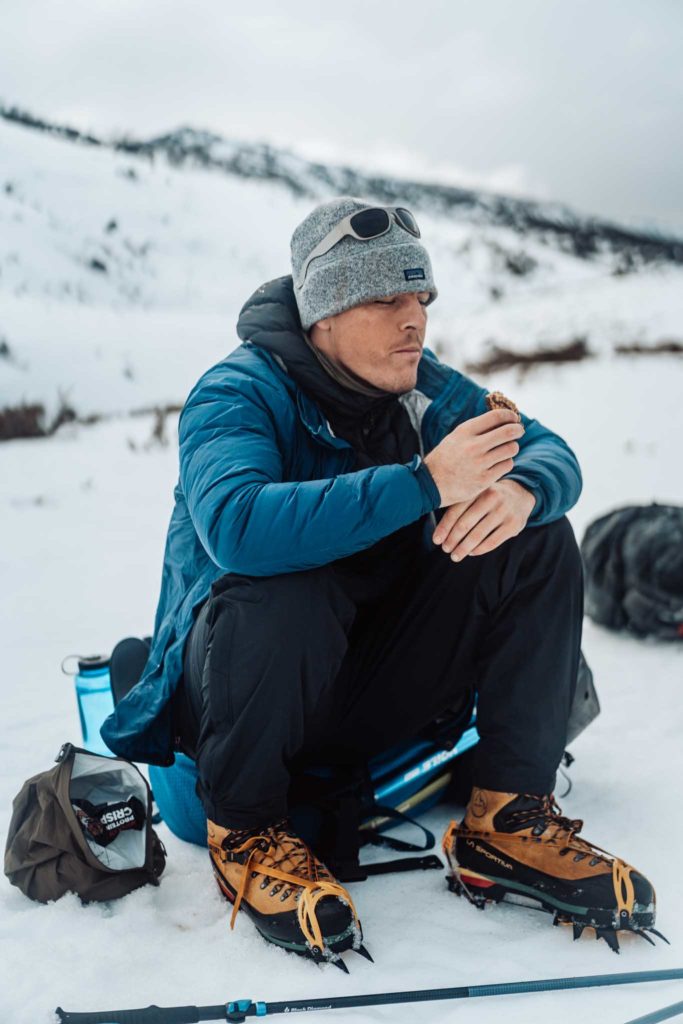 Showing up to the mountain with food you’ve never eaten before is a recipe (pun intended) for an unhappy belly. The food and fuel you bring into the backcountry are just as important as remembering to bring your ice axe and crampons and knowing how and when to use them effectively.
Showing up to the mountain with food you’ve never eaten before is a recipe (pun intended) for an unhappy belly. The food and fuel you bring into the backcountry are just as important as remembering to bring your ice axe and crampons and knowing how and when to use them effectively.
So, when it comes to food and fuel in the big mountains, let’s employ the same train of thought. Train your body to use and appreciate quick refuel stops and to eat while you are on the move before you get on expedition, just like you train yourself to use an ice axe. Here are our first tips:
- When you’re training for your expedition, make snacking part of that training routine so your body gets used to consuming high-calorie snacks mid-movement. By training your body to snack efficiently, it’ll be easier on the mountain.
- Keep your snacks diverse, it makes for more enjoyment on the mountain.
- When snack training, mix regular foods (e.g., nuts) with smart foods (e.g., energy gels, bars).
By regularly training and snacking, you will feel more comfortable and have a better grasp on what you like, what is easy to consume, and most importantly, what works for your unique body, before you get on an expedition.
Rebecca’s Tip: “It’s important to plan and practice your mountain nutrition strategy more than once before you go on expedition. This will help you remember to eat and drink on the mountain and give you confidence that you have a strategy that works for you.”
Fuel
We like to think about fuel (or food) in two ways; your regular foods and your science or smart foods. Regular foods include things like nuts, chips, candy bars, dried fruit, or anything else that you might pick up at the grocery store or gas station. Smart foods include things like gels, bars, energy gummies, and powders.
When you’re in the mountains, you should be aiming for 200 to 400 calories per snack at a rate of one snack per hour while moving. Here are a few helpful examples and tips on how to optimize fueling yourself with snacks.
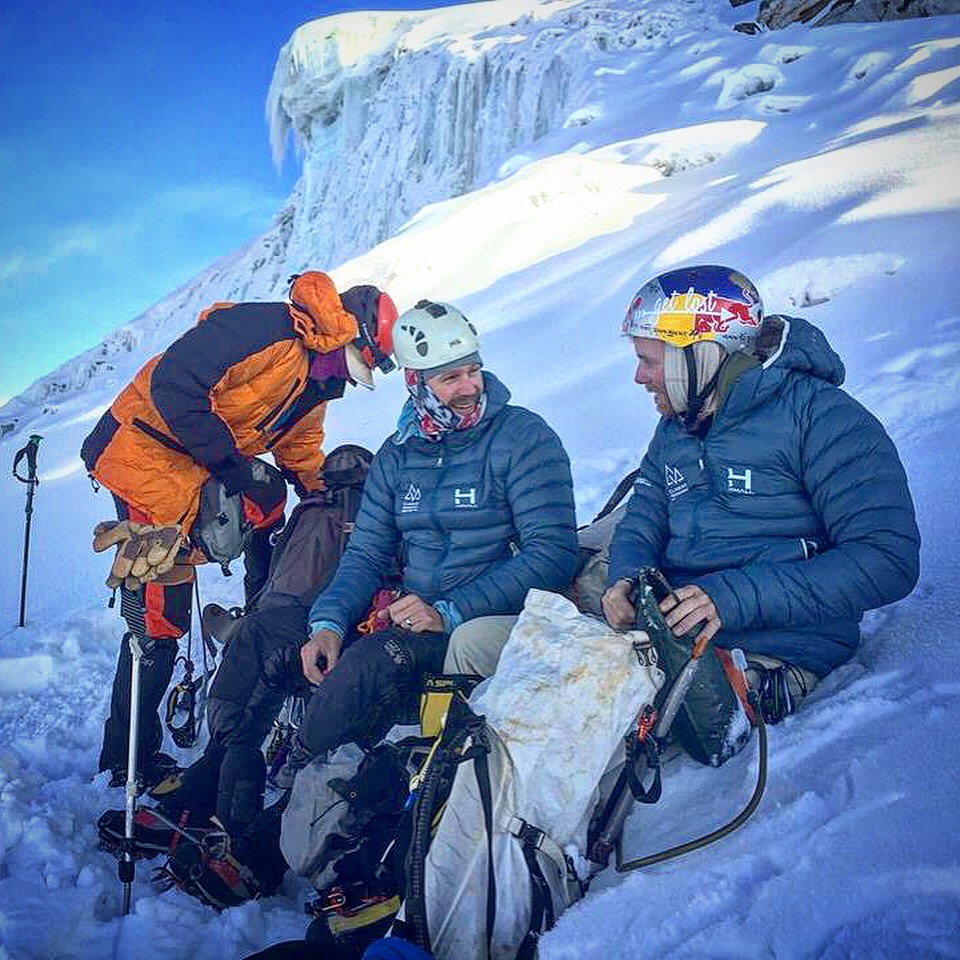 Technical Terrain: We recognize that sometimes when you’re moving through technical terrain, think glaciated slopes or ice climbing, you can’t sit down for a snack every hour. You can’t eat anything fiddly, either. So, having those snacks inaccessible places in your jacket pocket and having your body trained to access them and eat them will increase your chances for success in the mountains. An energy gel (smart food) is going to be perfect in this situation.
Technical Terrain: We recognize that sometimes when you’re moving through technical terrain, think glaciated slopes or ice climbing, you can’t sit down for a snack every hour. You can’t eat anything fiddly, either. So, having those snacks inaccessible places in your jacket pocket and having your body trained to access them and eat them will increase your chances for success in the mountains. An energy gel (smart food) is going to be perfect in this situation.- Alpine Starts: On summit day, your day will usually start at about 2 or 3am. You’ll get up, have breakfast, and start climbing up and up through the early hours. And as you might imagine, eating breakfast that early in the morning can be tough! Give yourself a head start by carbohydrate-loading your dinner the night before. Those carbs will show up for your muscles the next day and provide you with the necessary fuel. Once you’re awake, stick to things that are easy to digest and get down when you are half asleep. We often lean into drinks and meal replacements when we have an alpine start and then snack extensively throughout summit day. This leads to our next pointer…
- Lunch All Day: In the mountains, we have a saying: lunch starts at breakfast and ends at dinner. We say this for two reasons: 1) we want you to be constantly fueled (or refueled) so you never go into a calorie deficit, and 2) there’s usually not enough time on summit day to take a big, long lunch break. Instead, we take smaller, more frequent rest stops, and that schedule suits snacking better. By snacking and eating your regular snack food throughout the day, you’ll feel stronger all day. Some of our favorite “real food” snacks are salted nuts, nut butter, jerky, cheese, etc.
Rebecca’s Tip: “The higher up the mountain you go, the easier the fuel needs to go down think sports gel, liquid calories, gummies, or your favourite candy.”
Hydration
A great day in the mountains means you start your day hydrated, and hydration starts days before you actually step onto the mountains. Keep this in mind as you travel to your destination. Airlines rarely serve water often enough, and the dry climate-controlled air pulls moisture out of our bodies quickly. Even if you can’t take a full water bottle onto the plane, bring an empty, wide-mouthed water bottle and ask your flight attendants to refill it.
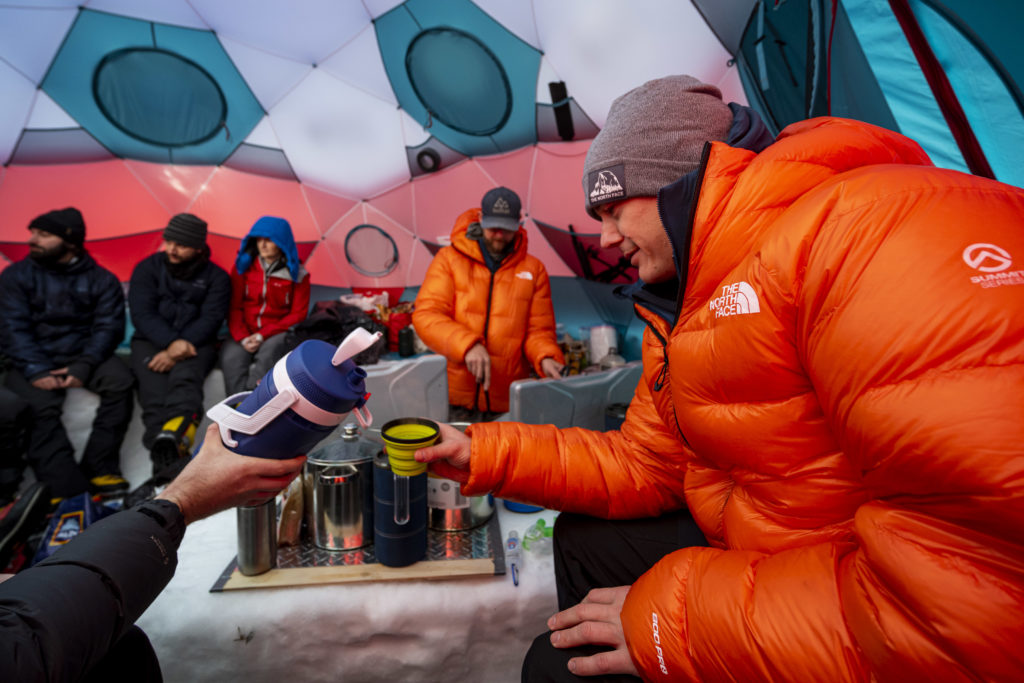 Once you are on expedition, spend your morning hydrating for the day to come. If you step onto the trail well-hydrated, it is much easier to stay ahead of the dehydration throughout the day. Before you’re moving for the day, check in with your guide on water strategy, meaning the frequency and amount of water to carry and consume. They will be able to help you balance the weight against your refill ability, which is mountain-dependent. We also understand that some people have a really hard time drinking plain water, so we suggest making it more palatable by adding in an electrolyte drink tab. That will make it more tempting while amping up your fuel and water intake. Remember, just because it has electrolytes doesn’t mean you need less water! Another great way to reach your daily hydration needs is to mix in caffeine-free herbal tea, like chamomile. We often turn to hot tea in a small thermos on cold peaks or at the end of the day as a way to relax and rehydrate.
Once you are on expedition, spend your morning hydrating for the day to come. If you step onto the trail well-hydrated, it is much easier to stay ahead of the dehydration throughout the day. Before you’re moving for the day, check in with your guide on water strategy, meaning the frequency and amount of water to carry and consume. They will be able to help you balance the weight against your refill ability, which is mountain-dependent. We also understand that some people have a really hard time drinking plain water, so we suggest making it more palatable by adding in an electrolyte drink tab. That will make it more tempting while amping up your fuel and water intake. Remember, just because it has electrolytes doesn’t mean you need less water! Another great way to reach your daily hydration needs is to mix in caffeine-free herbal tea, like chamomile. We often turn to hot tea in a small thermos on cold peaks or at the end of the day as a way to relax and rehydrate.
Rebecca’s Tip: “Think drip feed. This means frequent little sips throughout the day when you are in the mountains. It won’t always be practical or safe to stop to eat and drink so get used to eating and drinking on the go.”
Recovery
Recovery starts immediately at the end of your day, especially if you are doing a multi-day expedition. We focus on the four R’s of Recovery, including:
- Rehydrate: You lose a lot of fluid when you are in the mountains, mainly through sweating and exhaling in dry air. This means that when you have a big day in the mountains, you need to drink water not just before and during the day but also after you are done trekking or climbing.
- Refuel: You’ve been working hard all day, and now your energy levels are depleted. It’s time to eat so you can replenish what you’ve lost. Focus on carbohydrates and protein, and use recovery powders, drinks, and bars to help give you a leg up.
- Repair: A big expedition undoubtedly wears on your muscles. Here’s what’s actually happening—you’re experiencing micro-muscle tears, which is how our body builds muscle over time. In the backcountry, we need to quickly repair our muscles with high-protein foods.
- Rest: When your rest day arrives, take full advantage. Or once you hit base camp for the night, catch some sleep instead of staying up late. Sleep is one of the easiest ways to keep your body functioning at a high performance level. Don’t underestimate the power of a good night’s rest!
Dialing in your nutrition strategy is arguably just as important as your physical and mental preparations. If you’re ready you’ll get more enjoyment out of your mountain trip, keeping you safer and increasing your chances of summit success.
Rebecca’s Tip: “At the end of the day, when you get back to camp, start to rehydrate and refuel as soon as possible. Adding an electrolyte to your water or sipping on a recovery shake will help aid the absorption of water.”
Ready for more?
Ask Rebecca all your high-performance nutrition questions during our live webinar, access resources from Rebecca when you climb with us, and work with Rebecca one-on-one to develop a nutrition plan for the backcountry that works individually for you!
- Learn with us! Check out our live webinar below with Rebecca Dent.
- Climb with us! When you climb with CTSS, your onboarding documents include a PDF from Rebecca to support your nutrition in the mountains.
- Work with Rebecca! Book a free Discovery Call to discuss your mountain goals and learn how she can help. Click here to schedule.
One final tip from Rebecca: “If you know you struggle to get anything down at higher altitudes, practice eating when you don’t feel hungry at home, e.g., during a training session, straight after a long hike/training session, straight after a small meal, time of day you don’t usually eat, etc.”
Skills Training in Ecuador
Our Ecuador private team spent four fantastic days training and learning on Volcano Antisana, Ecuador’s fourth-highest volcano, in preparation for Denali. Despite poor weather conditions on some days, they practiced mountaineering skills like tying knots, pulling sleds, crevasse rescue, repelling, steep snow climbing, anchor building, etc.
Ultimately, the windy, cold, and snowy weather prevented our team from making an attempt on Volcano Antisana, but they were able to use that time for more valuable training on the mountain.
The team is en route home, but not without a relaxing retreat at the Papallacta Spa Resort before turning their attention homeward.
Photos from CTSS Guide Edgar Parra
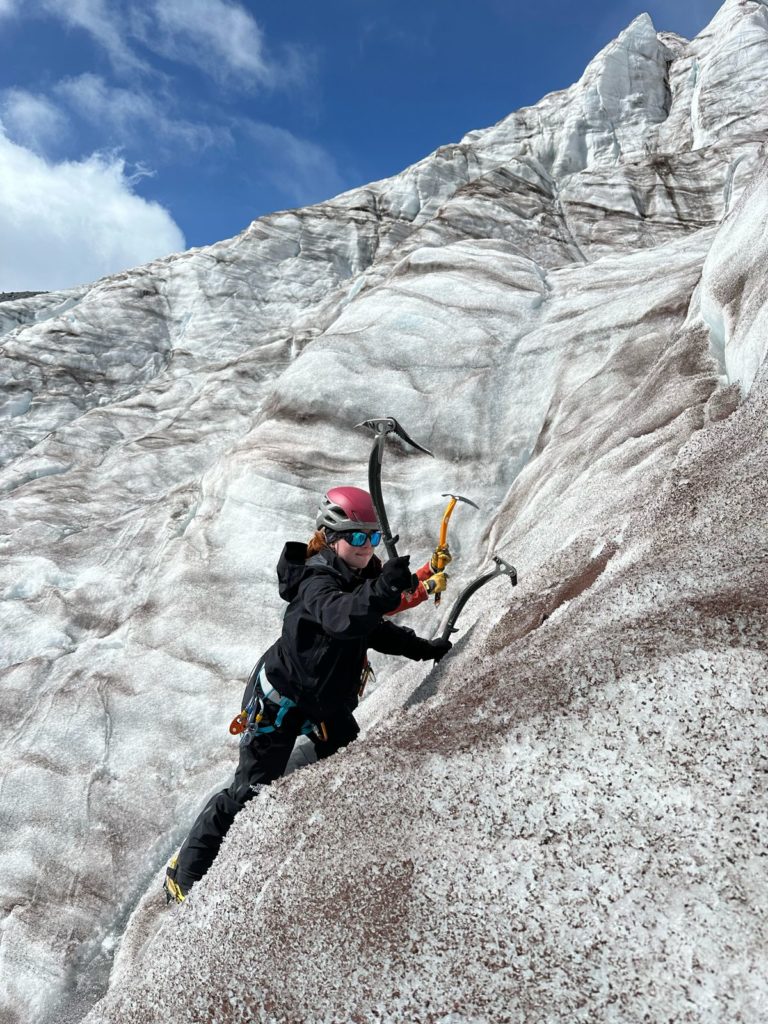 Ice climbing skills practice on Volcano Antisana.
Ice climbing skills practice on Volcano Antisana.
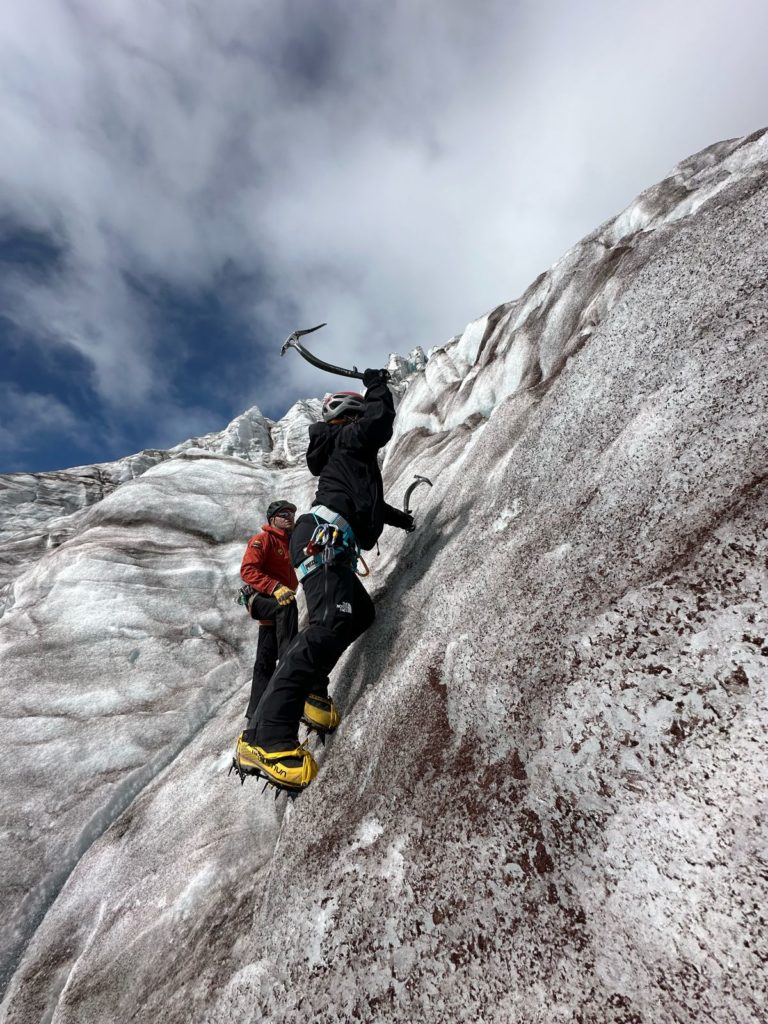 Getting the swing of ice climbing for our private expedition!
Getting the swing of ice climbing for our private expedition!
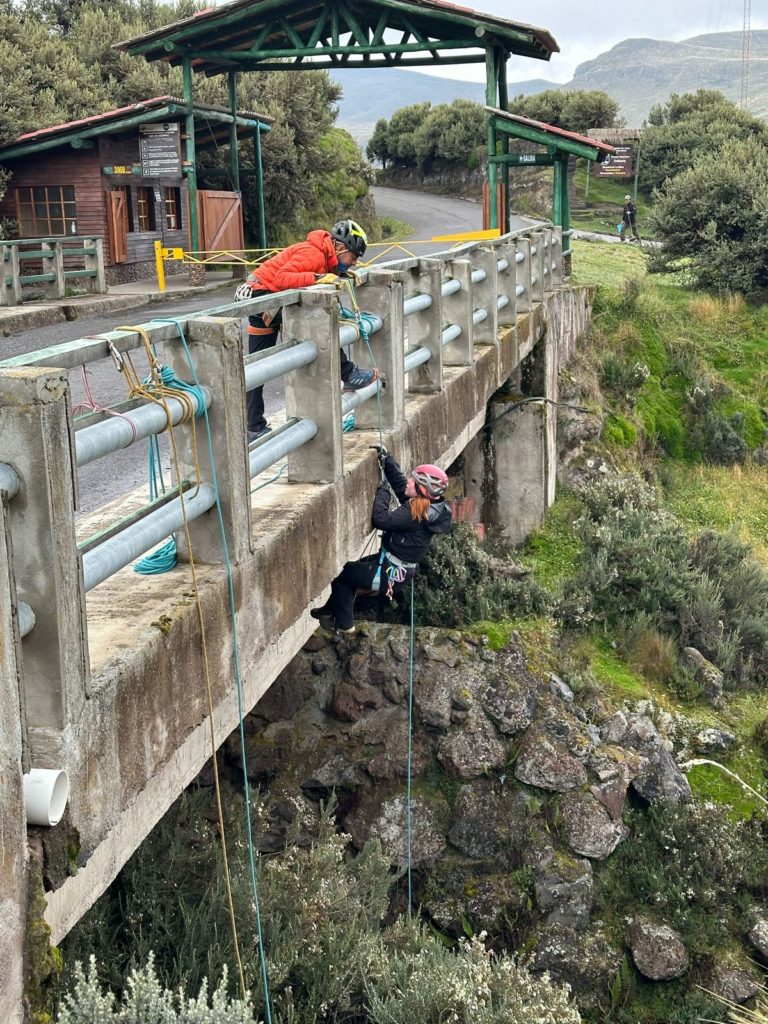 Skills training can happen anywhere, we love our creative guides like Edgar!
Skills training can happen anywhere, we love our creative guides like Edgar!
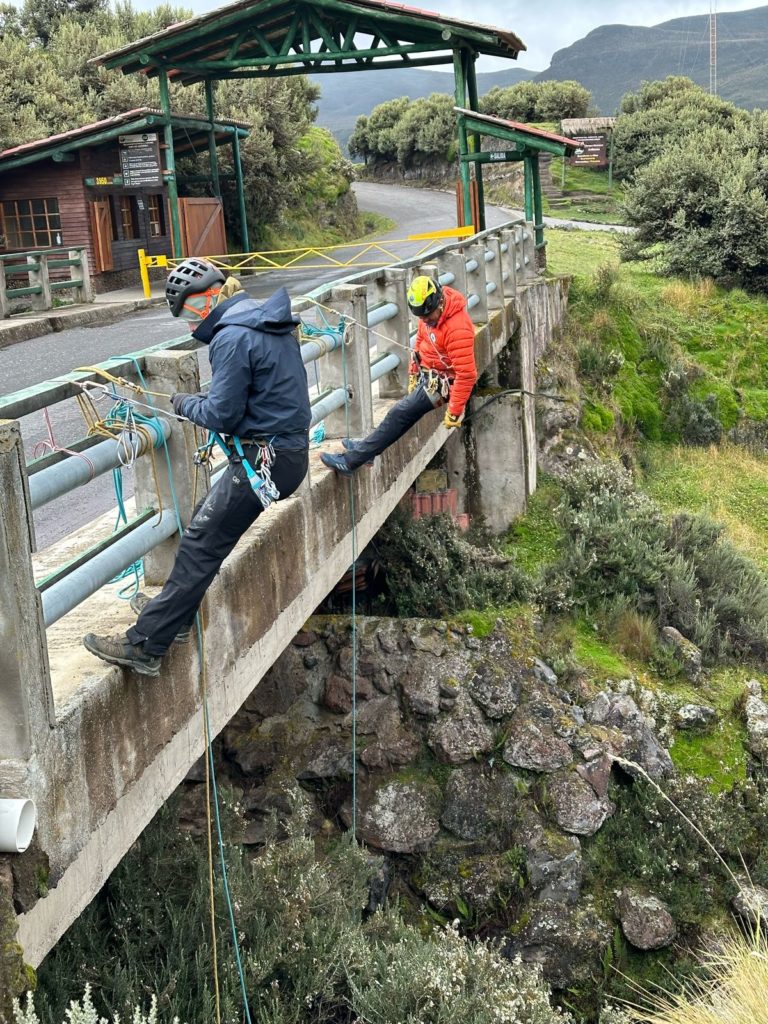 Rappelling practice for our team on Volcano Antisana.
Rappelling practice for our team on Volcano Antisana.
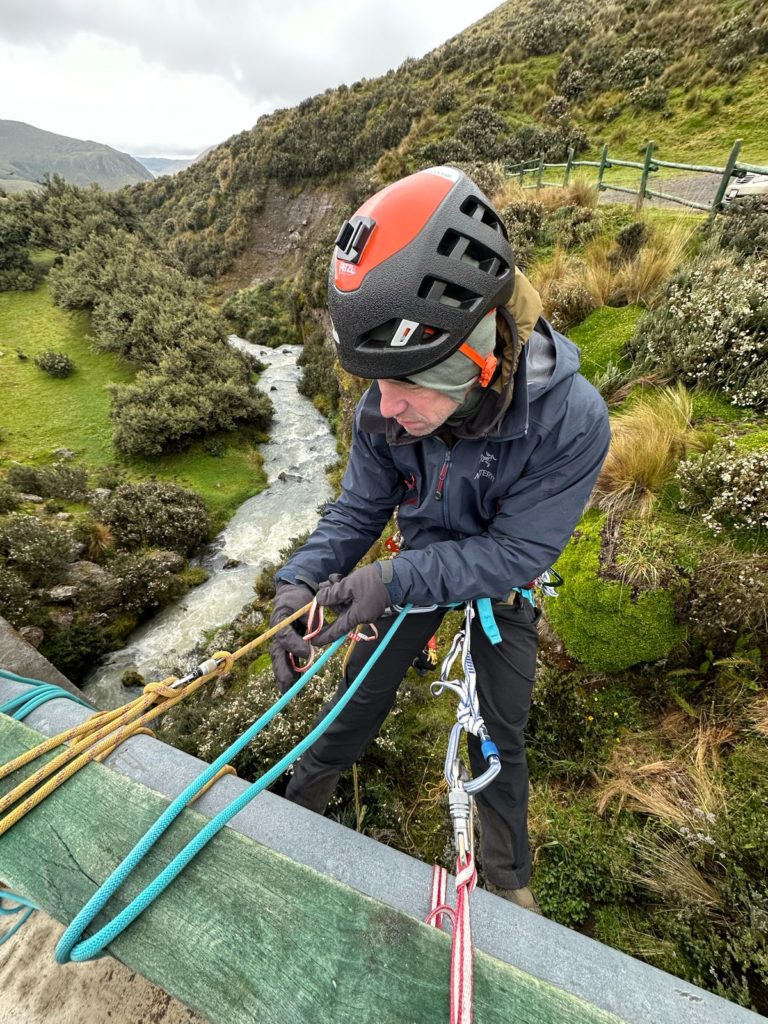 Practice makes perfection especially when you’re preparing for Denali.
Practice makes perfection especially when you’re preparing for Denali.
 Thank you Edgar, and to our private team, for taking skills learning to the next level!
Thank you Edgar, and to our private team, for taking skills learning to the next level!
Custom Luxury Add-Ons
Custom Luxury Add-Ons
If you can dream it in Africa, our team can make it happen! Maybe it’s a safari to the Serengeti or getting up close (but not too personal) with the gorillas in Rwanda? Here is a sampling of the custom luxury add-ons that our team can plan and coordinate for you!
- Safari in Serengeti National Park: Explore the vast plains of Serengeti to witness the incredible wildlife, including the Big Five (lion, elephant, buffalo, leopard, and rhinoceros).
- Experience the Maasai Culture: Learn about the rich culture and traditions of the Maasai people by visiting a Maasai village and participating in cultural activities such as dance, music, and crafts.
- Gorilla Trekking in Uganda or Rwanda: If you’re up for another adventure, consider traveling to Uganda or Rwanda for an unforgettable experience of gorilla trekking in the lush forests of Bwindi Impenetrable National Park or Volcanoes National Park.
- Explore Victoria Falls: Head to Zambia or Zimbabwe to witness the awe-inspiring Victoria Falls, one of the largest waterfalls in the world. You can take a boat ride, go whitewater rafting, or even bungee jump over the Zambezi River.
- Discover the Okavango Delta: Explore the unique ecosystem of the Okavango Delta in Botswana by taking a mokoro (traditional canoe) safari or a guided walking safari to see diverse wildlife and stunning landscapes.
- Go Whale Watching: If you’re visiting during the right season, consider going whale watching in places like South Africa or Mozambique to see magnificent marine life, such as humpback whales or southern right whales.
- Visit the Sabi Sand Nature Reserve: Located adjacent to the famous Kruger National Park, Sabi Sand offers exclusive and luxurious safari experiences known for its exceptional wildlife sightings, including the Big Five and elusive leopards.
Contact us for itinerary planning and pricing.
Zanzibar Getaway
[wp_megamenu menu=”1175″]
Zanzibar Getaway
Contact us for Pricing
4 Day | 3 Night
If you’re climbing Kilimanjaro and want to make the most of your African adventure, our 3-day, 2-night Zanzibar Getaway following your expedition is a great way to unwind and relax in one of the most beautiful parts of the continent, plus your friends and family can join, making it a celebration you won’t forget. Nungwi is blessed with some of Zanzibar’s most idyllic swimming beaches. Spend your days lazing on the spectacular beaches, floating in the idyllic turquoise waters, or indulging in a massage. Then, as the sun sets, join the revelers as the town comes alive, cocktails flow freely, and the beach bonfires begin to blaze. Daily itineraries tend to be gloriously simple: sunbathe, swim, party, repeat!
Check it out HERE.
All prices are in US Dollars.
CTSS requires clients to buy trip insurance for all expeditions. Please see our page on trip insurance and cancellation policy for more information.
All payments, once submitted, are non-refundable and non-transferable. If balances are not received by specified dates, the client forfeits their place on the program and any prior fees paid.
African Safari: Tarangire National Park & Ngorongoro Crater
African Safari: Tarangire National Park & Ngorongoro Crater
Share Expedition
African Safari: Tarangire National Park & Ngorongoro Crater
Prices Start From $3,100 per person
3 Day | 2 Night
If you’re climbing Kilimanjaro and want to make the most of your African adventure, our 3-day, 2-night African Safari following your expedition is a great way to celebrate your success on Kilimanjaro and a perfect time for your friends and family to join you. This safari takes you to Tarangire National Park and Ngorongoro Crater, where you will experience some of the most spectacular wildlife and landscapes that Africa has to offer.
The Ngorongoro Crater is a UNESCO World Heritage Site known for its dense population of wildlife, including lions, elephants, and hippos. Often referred to as Africa’s “Eden” or the “Eighth Wonder of the World,” the Ngorongoro Crater is a landscape you don’t want to miss. This geological marvel was formed over two million years ago when a massive volcano erupted and collapsed, creating the world’s largest unbroken volcanic caldera. Today, this vast crater has walls that rise over 1,968 feet (600 meters) high and spans more than 100 square miles, all while harboring some of the most unique ecosystems in the world.
Tarangire National Park is renowned for its distinctive landscapes, abundant wildlife, and unique safari experiences. The park is dotted with iconic baobab trees that create a surreal backdrop for your game drives. In addition, its famous elephant population is one of the most abundant in Tanzania. But don’t worry; you’ll also have a chance to check out the other Big Five, including lions, buffalos, leopards, and rhinoceros.
African Safari Itinerary
This itinerary is only a rough estimate and will be determined by weather and conditions. This is adventure travel, meaning things rarely go as planned, and this schedule will likely change. Travlers need to be adaptable and positive.
- Day 1: This morning, your guide will pick you up from the hotel and depart for Tarangire National Park. Tarangire is one of Tanzania's largest national parks and a sanctuary for a famously large elephant population. Majestic baobab trees are an interesting feature of the park. Animals concentrate along the Tarangire River, which provides the only permanent water supply in the area. There is a great diversity of wildlife, including lion, leopard, cheetah, and up to six thousand elephants. Enjoy your afternoon game drive before sleeping within Tarangire National Park.
- Day 2: Start your day with a thrilling morning game drive in Tarangire National Park, where the golden savannah awakens with life. Witness herds of elephants, predators on the prowl, and vibrant birdlife in their natural habitat. After a relaxing lunch, embark on another exciting afternoon game drive to uncover more of Tarangire's hidden treasures. As the day winds down, begin your scenic journey to the Ngorongoro Conservation Area. On your way, you will pass through the town of Karatu in the green hills of Tanzania’s northern highlands. Presided over by the towering Ol Deani Volcano, this small, colourful town serves as a popular overnight stop for visitors exploring the area’s many game parks.
- Day 3: Today, you will descend into the Ngorongoro Crater, a wonderful haven for wildlife. Ngorongoro is unique in that almost all the wildlife lives within the crater walls, hence you have the opportunity to find game easily. Rhino in particular can be seen regularly, as well as prides of lion and other predators like cheetah. Enjoy lunch by the hippo pond, then you will commence with your journey back to civilization. You will then be dropped off at JRO Airport in the evening in time for your flight.
Our expeditions are designed to be fully inclusive, except for some services/items of a personal nature, like flights, gear, and insurance. Here’s a detailed list so you know what to expect.
Included in the African Safari:
- World-class safari guides
- All safari accommodations, including one night near Tarangire National Park and another near the breathtaking Ngorongoro Crater
- All safari meals, including breakfast, lunch, and dinner
- All transport within the itinerary, including all safari game drives
- Airport transfers from the Kilimanjaro International Airport (JRO)
Not Included in the African Safari:
- Flights to and from Tanzania
- Personal gear
- In the event of a rescue, evacuation, or early departure from the group, any rescue expenses incurred or excess expenses above and beyond our normal trip costs, including transport, hotels, evacuation, flight changes, and gear shipping, are the responsibility of the client.
- Guide tip (Customary but optional)
- Required trip insurance policy (for trip cancellation, interruption, rescue & evacuation, medical treatment, repatriation, etc.)
All prices are in US Dollars.
CTSS requires clients to buy trip insurance for all expeditions. Please see our page on trip insurance and cancellation policy for more information.
All payments once submitted are non-refundable and non-transferable. If balances are not received by specified dates, the client forfeits their place on the program and any prior fees paid.
Kilimanjaro Single Rooming
Single Rooming Option
$1,000 USD
We are happy to organize single-room accommodations throughout the expedition for you. If you aren’t price-sensitive, you snore, or you are easily awakened by others who do, this might be a great option.
We feel that having a single room helps climbers stay healthy and adds a bit of comfort and personal space that can go a long way. If you would like a single-room option, please let us know.
Please note that tent accommodations on the mountain are provided on a double-occupancy basis for safety and warmth. If you would like a single tent on the mountain, we can arrange that for an additional single rooming fee.
Kilimanjaro Team Climb + Safari
$8,795 USD
- July 16 – 27, 2026 (Masters | 50+) – Guided by Dallas Glass
- July 27 – August 7, 2026 – Guided by Dallas Glass
- December 28, 2026 – January 8, 2027
Our Kilimanjaro expeditions run from July to August and again from December to January to take advantage of the best weather and most favorable summit conditions. Typically, the weather in these months is the driest and warmest of the year.
- If these dates don’t work for you, or you would like a private trip and private guide, we also build custom itineraries for many of our climbers.
- You can climb Kilimanjaro as a stand-alone activity, or you can round out your experience in Tanzania with our custom-tailored add-ons, including a safari or a Zanzibar Getaway.
This expedition is our traditional guided team climb, which ascends the stunning Machame Route. Provided are guidance, leadership, and expedition oversight by renowned expedition leader Mike Hamill, local guides, logistics, team gear, porters, food, and support for a summit attempt on Kilimanjaro.
In addition, this program also includes our thoughtfully crafted African Safari itinerary to strike the perfect balance between thrilling adventures and well-deserved relaxation, ensuring you make the most of your time in Tanzania. Your journey will take you through Tarangire National Park, famed for its majestic baobab trees and large elephant herds, and conclude in the breathtaking Ngorongoro Crater, often referred to as ‘Africa’s Eden.
Team Departure + African Safari Itinerary
This itinerary is only a rough estimate and will be determined by weather and conditions. This is adventure travel, meaning things rarely go as planned, and this schedule will likely change. Climbers need to be adaptable and positive.
We always recommend climbers arrive in Arusha one day early to avoid travel delays or issues with lost baggage. Added expenses (hotel/food/sightseeing) of this extra day are the client’s responsibility.
- Day 1: Arrive in Tanzania at Kilimanjaro International Airport, transfer to hotel
- Day 2: Gear checks, team meeting, and check out the town
- Day 3: Drive to Kilimanjaro National Park gate (5,800ft) and climb through the rainforest to Machame Camp (10,000ft)
- Day 4: Continue to climb through Heather-Moorlands to the Shira Plateau Camp (12,300ft)
- Day 5: Continue the climb to Barranco Camp, climbing over a pass at nearly 15,000ft underneath the precipitous Breach Wall before descending to 12,800ft
- Day 6: Climb the Barranco Wall to about 14,500ft before again descending to Karanga Camp at around 13,000ft
- Day 7: Climb to our high camp at 15,500ft before turning in early for our summit climb early the next morning.
- Day 8: Summit Day! We awake in the wee hours of the morning (night), working our way to the “Roof of Africa” at 19,344ft. The day is cold and can be windy and snowy, so make sure you have proper warm gear! After standing on top, we descend back to high camp and take a brief respite before packing up and heading down to our final camp at 12,000ft
- Day 9: Pack camp and descend to the trailhead. Here, we bid farewell to our porters and guides before returning to town for lunch. Celebration Dinner
- Day 10: This morning, your guide will pick you up from the hotel and depart for Tarangire National Park. Tarangire is one of Tanzania's largest national parks and a sanctuary for a famously large elephant population. Majestic baobab trees are an interesting feature of the park. Animals concentrate along the Tarangire River, which provides the only permanent water supply in the area. There is a great diversity of wildlife, including lion, leopard, cheetah, and up to six thousand elephants. Enjoy your afternoon game drive before sleeping within Tarangire National Park.
- Day 11: Start your day with a thrilling morning game drive in Tarangire National Park, where the golden savannah awakens with life. Witness herds of elephants, predators on the prowl, and vibrant birdlife in their natural habitat. After a relaxing lunch, embark on another exciting afternoon game drive to uncover more of Tarangire's hidden treasures. As the day winds down, begin your scenic journey to the Ngorongoro Conservation Area. On your way, you will pass through the town of Karatu in the green hills of Tanzania’s northern highlands. Presided over by the towering Ol Deani Volcano, this small, colourful town serves as a popular overnight stop for visitors exploring the area’s many game parks.
- Day 12: Today, you will descend into the Ngorongoro Crater, a wonderful haven for wildlife. Ngorongoro is unique in that almost all the wildlife lives within the crater walls, hence you have the opportunity to find game easily. Rhino in particular can be seen regularly, as well as prides of lion and other predators like cheetah. Enjoy lunch by the hippo pond, then you will commence with your journey back to civilization. You will then be dropped off at JRO Airport in the evening in time for your flight.
Our expeditions are designed to be fully inclusive, except for some services/items of a personal nature, like flights, gear, and insurance. Here’s a detailed list so you know what to expect.
Included:
- Guides for both the expedition and safari
- Porters during your climb
- All expedition accommodations, including three nights at a hotel in Arusha
- All safari accommodations, including one night near Tarangire National Park and another near the breathtaking Ngorongoro Crater
- All transport within the itinerary, including all safari game drives
- Airport transfers from the Kilimanjaro International Airport (JRO)
- All expedition meals, including a celebration dinner on the final evening
- All safari meals, including breakfast, lunch, and dinner
- All group gear: four-season tents, cooking gear, group duffels, stoves, etc.
- Satellite phone: available to clientele at $3/min
- Group first aid equipment
Excluded:
- Flights to and from Arusha, Tanzania
- Any extensions before or after the specified itinerary (we are happy to help you plan these)
- Personal gear: all personal climbing gear is the responsibility of the client
- 3 lbs. personal snack food (real food and stuff you know you will want to eat at altitude when you don’t feel like eating: nuts, jerky, granola bars, dried fruit, candy, etc.)
- In the event of a rescue, evacuation, or early departure from the group, any rescue expenses incurred or excess expenses above and beyond our normal trip costs, including transport, hotels, evacuation, flight changes, and gear shipping, are the responsibility of the client.
- Porter tip pool ($300)
- Guide tip (Customary but optional)
- Required trip insurance policy (for trip cancellation, interruption, rescue & evacuation, medical treatment, repatriation, etc.)
All prices are in US Dollars.
CTSS requires clients to buy trip insurance for all expeditions. Please see our page on trip insurance and cancellation policy for more information.
All payments once submitted are non-refundable and non-transferable. If balances are not received by specified dates, the client forfeits their place on the program and any prior fees paid.
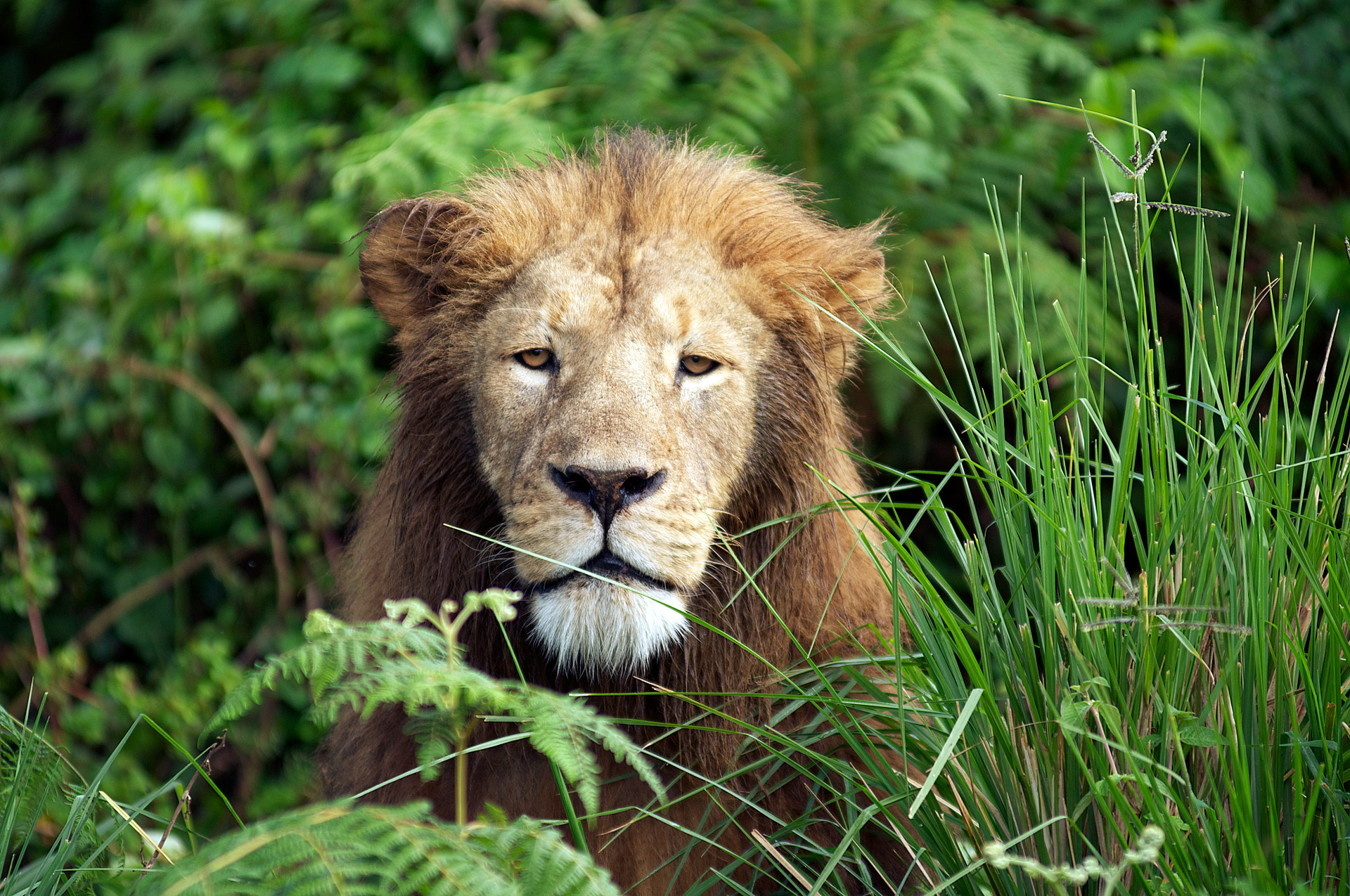
Illiniza Norte Summit!
On Monday, our team ascended to the Nuevos Horizontes, a mountain hut on Illiniza, where they spent the night in preparation for their climb.
Yesterday, the team climbed Illiniza Norte (16,818ft) under beautiful weather conditions with just a bit of wind - it doesn't get better than that!
Our local guide, Edgar, reports that the team is feeling fast and strong, and it shows. They climbed Illiniza Norte in 5 hours round trip - wow! Today, the team heads to Volcano Antisana, which is the fourth-highest volcano in Ecuador, at 18,875 ft (5,753 meters). There, they will spend four days learning and practicing as part of the team's training for Denali.
Photos from CTSS Guide Edgar Parra
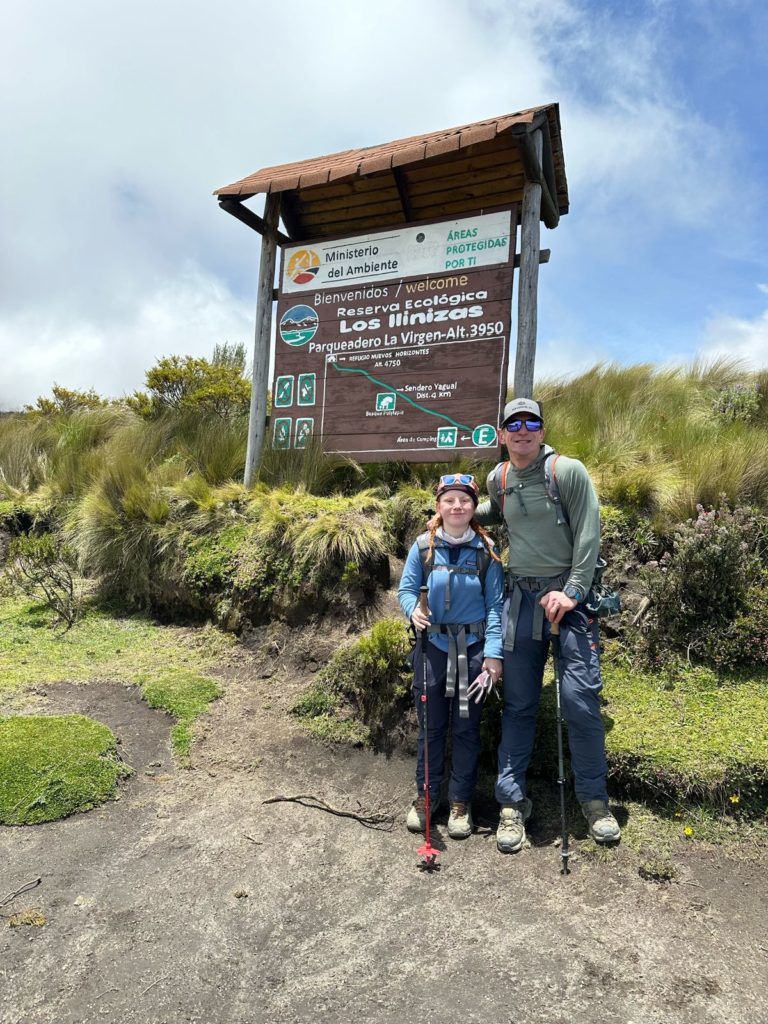 Acclimatization hikes are done now it's time for Illiniza Norte (16,818ft)!
Acclimatization hikes are done now it's time for Illiniza Norte (16,818ft)!
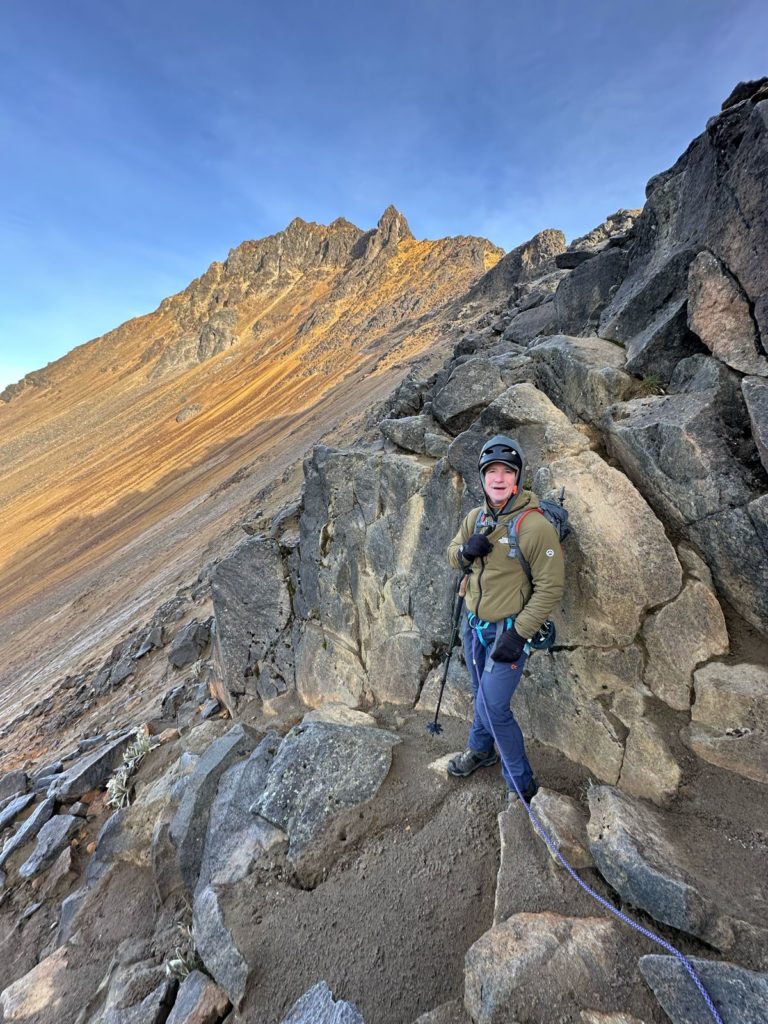 This is Ecuador climbing at it's finest! Perfect conditions, craggy volcanoes, and alpine starts.
This is Ecuador climbing at it's finest! Perfect conditions, craggy volcanoes, and alpine starts.
 All smiles from Ecuador as our private team makes their way above the clouds.
All smiles from Ecuador as our private team makes their way above the clouds.
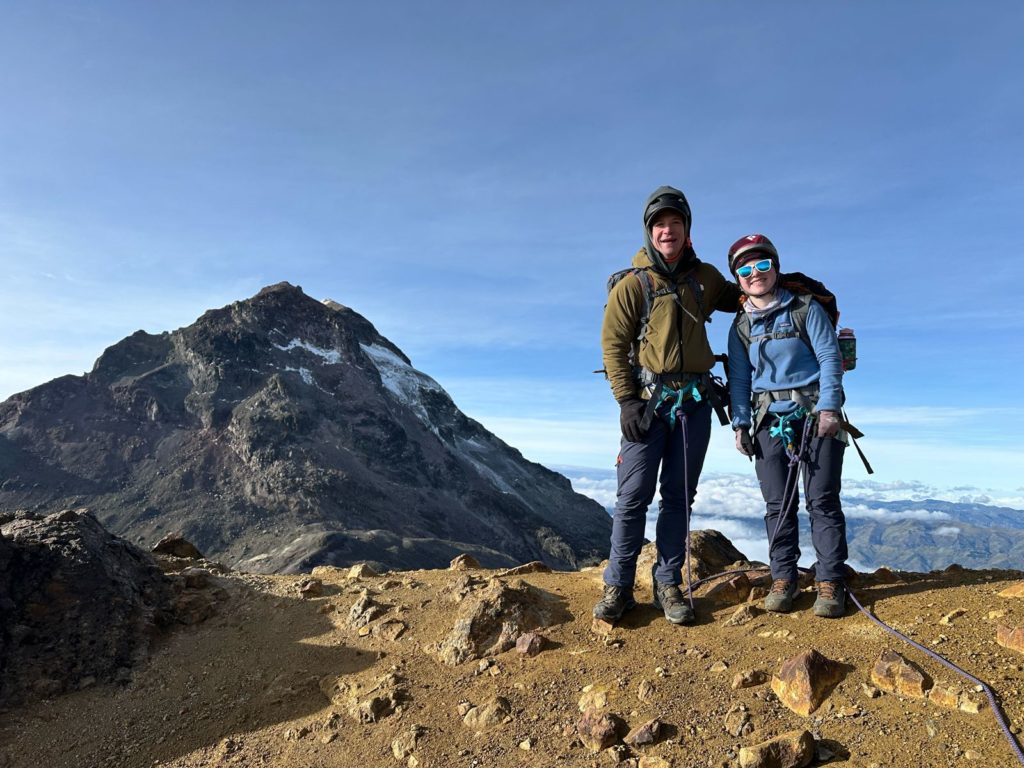 5 hour ascent of Illiniza Norte (16,818ft) for this powerhouse team.
5 hour ascent of Illiniza Norte (16,818ft) for this powerhouse team.
 Summit Success on Illiniza Norte (16,818ft)
Summit Success on Illiniza Norte (16,818ft)
Quito, Ecuador Acclimatizations
Our Ecuador private expedition is off to an exciting start!
The small but mighty team took the teleférico (cable car) to Pichincha, an active stratovolcano near Quito. This cable car is one of the highest aerial lifts in the world, rising from 3,117 meters (10,226 feet) to an impressive 3,945 meters (12,943 feet). From there, they hiked up to 14,000 feet to acclimate.
Yesterday, they hiked Guagua Pinhincha (15,696ft) for more acclimatization before starting to climb. Our local guide reports that everyone is enjoying themselves and having a fantastic time.
Today, they are headed for the Nuevos Horizons Refuge and will start their climb of Illiniza Norte tomorrow.
Photos from CTSS Guide Edgar Parra
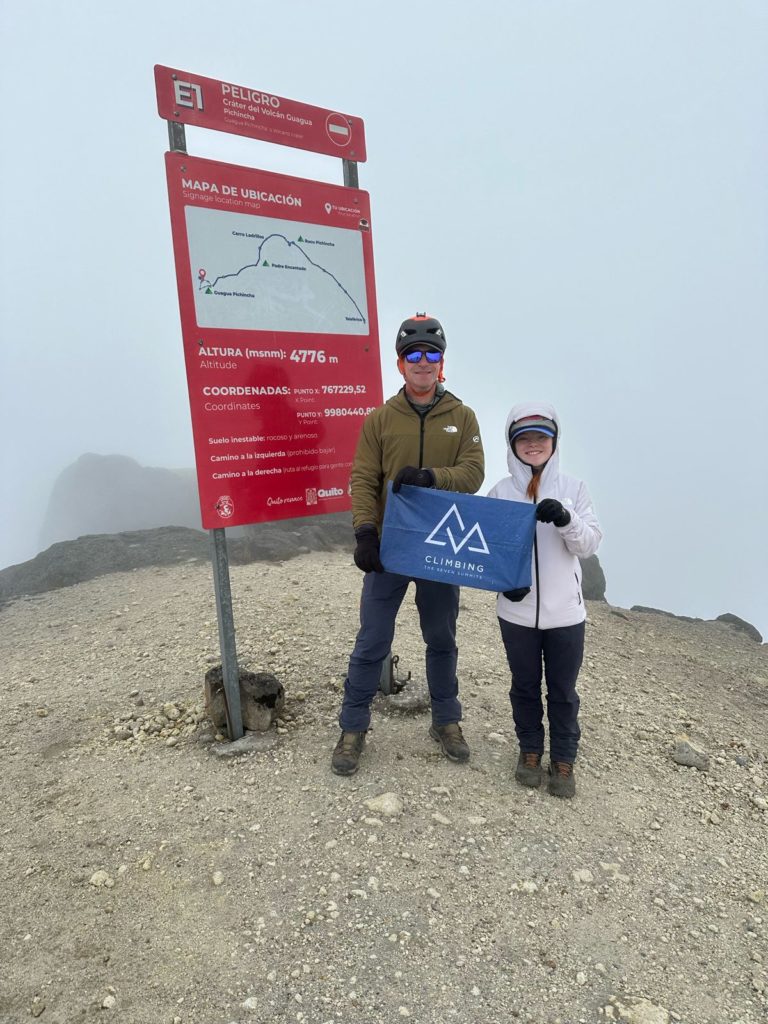
Guagua Pinhincha (15,696ft) for an acclimatization hike!
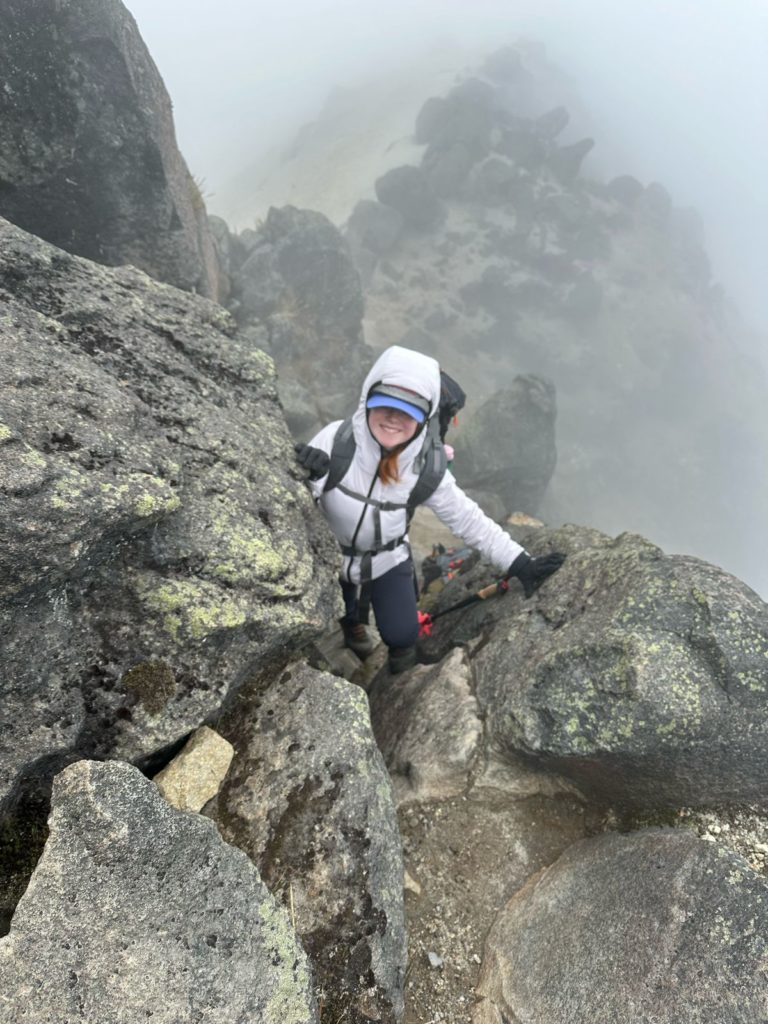
Feeling good in Ecuador for our private team!

Hello from Quito, Ecuador and the highest aerial lifts in the world!


